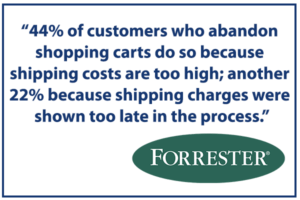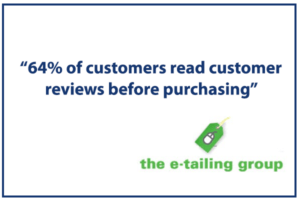
Online shopping has become a way of life. For many, the motivation is convenience or product depth; others simply prefer to peruse online photos rather than stroll store aisles. Of course, some demographics do more shopping online, and certain products and services are purchased online more readily.
So why is your online store bringing in revenues that are more like earnings from a babysitting gig than a living? Let’s assume that you’ve done your homework and your target audience is receptive to purchasing online, your products are priced reasonably, and you are marketing your products to drive website traffic.
Review these five common eCommerce mistakes.
1. There’s no human being behind the “Oz-like” curtain
Despite the lack of human interaction typical when purchasing online, buyers want to know that there are human beings behind the site they are purchasing from. That means highly visible links to live customer service (including a phone number and even a chat option), a link to About Us, and a physical address. It also means that company emails should come from a person with a name and title, not Your Store Name.
2. “You bought it, you own it.”
Well, that’s not a very friendly approach. Customers need to know that they can return or exchange an item if they don’t like it for any reason. Return policies should be easy to find, clearly explained, and logically located within the purchase process. The best way to encourage purchase is to provide a guarantee about your product.
 3. Shipping “gotcha!”
3. Shipping “gotcha!”
Don’t wait until the final step of your purchase process before
providing shipping information. Time-strapped customers encountering high shipping costs at the end of a lengthy shopping experience will be frustrated and unlikely to complete the purchase. Despite the fact that it costs you to ship products, customers often balk at them, and high shipping costs deter online sales. Consider options to reduce this barrier to sale, such as flat-price shipping, free return shipping, free shipping with a minimum spend level, or free shipping with a yearly membership fee.
4. Never mind what your friends think.
 While perhaps you wish your customers would just think for themselves, today’s buyers are compelled to purchase based on the opinions of others. Online reviews and customer testimonials attesting to the quality of your product or service are an integral element for your online store. Place them strategically to address concerns that a user may have: for example, next to a “Buy” button containing a price, include a testimonial addressing what a great value your product or service is.
While perhaps you wish your customers would just think for themselves, today’s buyers are compelled to purchase based on the opinions of others. Online reviews and customer testimonials attesting to the quality of your product or service are an integral element for your online store. Place them strategically to address concerns that a user may have: for example, next to a “Buy” button containing a price, include a testimonial addressing what a great value your product or service is.
5. Just whisper your social security number and date of birth; we won’t tell!
It should be easy to buy from your store. Make your ordering process logical, efficient and straightforward to convert visitors into customers. Use standard formats for data gathering such as name, address, payment information; asking for zip code first is incongruous. Minimize the number of steps to complete the process and provide a visual demonstrating the user’s progress. Finally, don’t ask for information you don’t need; requiring extra information is intrusive.
Remember to that once an order is placed you need to maintain a dialogue to keep the customer updated at each step of the process. Avoid out of stock conditions and other snafus by monitoring your inventory and shipping processes. And don’t forget to follow up to ask customers to post an online review of the product they’ve purchased!
Need help with your online store? Contact us.



This is a really helpful article. I had no idea I needed to have an about us page but now that i read this it makes a lot of sense. The shipping issue is a real struggle too. I have seen some sites that give an estimate of shipping as soon as the customer inputs their zip code and I am going to research whether I can add that kind of information. Thank you so much for the advice – it is hard to get information about ecommerce.
Thanks for your comment, Doreen. We’ll try to post about eCommerce again soon. We also share eCommerce tips on our Facebook page http://www.Facebook.com/OnlineAmplify and on Twitter (@onlineamplify).